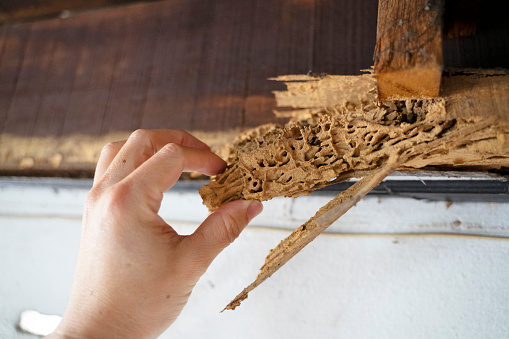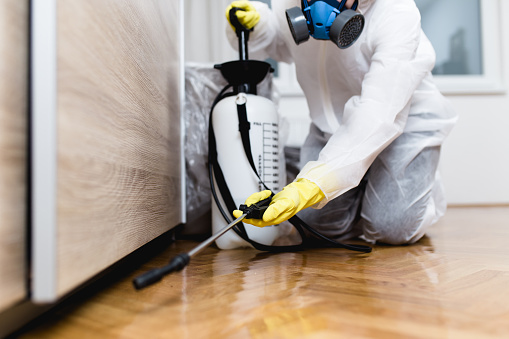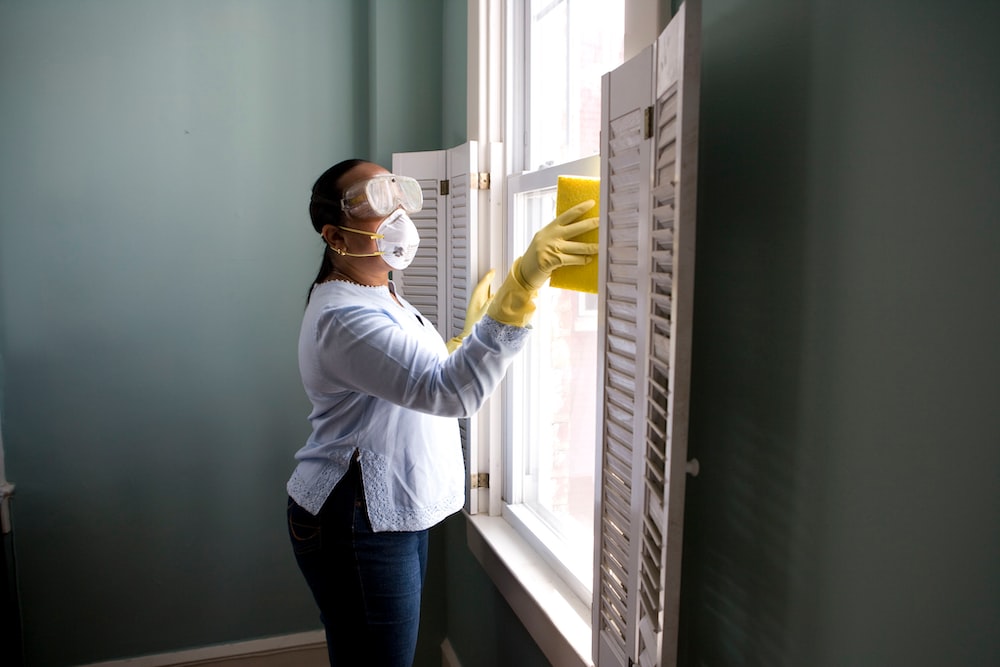For homeowners, the presence of termites can be devastating. Not only do they cause extensive damage to wooden structures and furniture, but they also represent a costly problem since they can quickly spread throughout your property. That’s why it’s important to take preventive measures to stop termite infestations before they start.
This article will walk through the different ways to prevent termites in your home and treatment options for those who already have a problem. Also, we’ll discuss the signs of termite damage to look out for. Let’s get started.
Prevention Tips For Termite Infestation
The best way to deal with termites is to prevent them from entering your home in the first place. Here are some tips on how to do this:
1. Reduce Soil To Wood Contact
Direct contact between soil and wood provides termites with an easy access point to your home. To prevent this, use pressure-treated lumber for decks, porches, and other outdoor structures. Place a 6-inch barrier between your home’s concrete slab or footers and wooden porch posts.
You can also reduce soil contact by installing waterproof membranes or flashing when building a deck. A gravel board can create a barrier between the soil and the timber posts for a wooden fence. Also, be sure to keep mulch and debris away from the foundation of your home.
Keep wooden siding, trim, and other wood pieces away from the soil. Make sure to use metal flashing between the siding and your home’s foundation. Also, inspect the wood for signs of termite activity once every few months.
2. Remove Moisture Sources
Termites need moisture to survive, so removing any sources of standing water in or around your home is important. Always repair any leaking faucets, pipes, and other plumbing fixtures immediately. Also, check your home’s drainage system to ensure it works properly.
Keep gutters clean and debris-free so water can drain from your home’s foundation. Ensure that downspouts are installed and move water away from your home.
3. Eliminate Food Sources
Termites feed on wood, so it is important to remove any sources of wood in or around your home. Remove old tree stumps or dead branches near your home, as they attract termites. If you have firewood, store it away from your home.

4. Treat Exposed Wood
If you have any exposed wood around your homes, such as decks, fences, or siding, you should treat them with pesticides. This will keep termites from entering your home and prevent existing termite colonies from spreading. Be sure to use an approved pesticide for the specific type of wood you are treating.
5. Seal Cracks And Gaps
Termites can easily enter your home through cracks and gaps in the foundation or walls. Inspect your home for openings around windows, doors, vents, pipes, and other areas where air can enter. Seal these openings with caulk or expandable foam to prevent termites from getting inside.
6. Keep Plants Away
Termites are attracted to plants, so be sure to keep any shrubs or trees away from your home. Plant them at least 15 feet away and ensure they are not touching the walls of your home. Also, inspect plants regularly for signs of termite activity. You can also use pest control products to keep termites away from plants.
7. Regular Inspections
To prevent a termite infestation, it is important to inspect your home regularly. Some common signs of infestation include swarms of flying insects, mud tubes, and damaged wood. If you notice these signs, contact a professional pest control company to inspect your home immediately. Also, look for any areas vulnerable to infestations and take steps to seal them off.
8. Swarming Season Prevention
For most areas, the swarming season starts in late spring and lasts until early summer. During this time, termites will emerge from their colonies in search of new food sources. To prevent a termite infestation during this time, it is important to take extra precautions, such as sealing any cracks or gaps in your home’s foundation and inspecting for signs of termite damage.
You can also use insecticides for termite prevention from entering your home. Make sure to choose an insecticide specifically designed for termite control and follow the instructions on the label.

How To Get Rid Of Termites
If you suspect an infestation of termites in your home, it’s important to act quickly and take the necessary steps to eliminate them. The treatment options include:
1. Termiticide Application
You can use a termiticide to kill termites for a more traditional approach. This involves placing liquid or foam pesticide in the soil around your home where termite activity is present. It’s important to carefully follow the directions on the product label for the best results. Also, be sure to choose a product specifically designed for controlling termites.
2. Heat Treatment
Another option is heat treatment, which involves generating high temperatures around your home to kill off the infestation. A professional will set up large fans that blow hot air onto the affected area, raising the temperature of the soil enough to kill the termites.

3. Exclusion
Exclusion is another way to prevent and get rid of termites. This involves sealing off areas where termites could enter your homes, such as cracks in walls or foundations, and replacing damaged wood. You may also want to install screens on vents and windows to keep out any unwanted pests. Inspecting your home regularly is important as ensuring any potential entry points are sealed off.
4. Monitoring And Bait Stations
For an ongoing termite control strategy, you can use monitoring and bait stations to catch any new infestations before they become a problem. This involves setting up monitoring devices around your home that alert you when there is activity nearby. You can set up baits near the activity and monitor them until the termites are eliminated.
5. Gas Fuels
Another option is to use a gas fuel like fumigation. This involves releasing gas into your home that will kill the termites and their eggs, effectively eliminating them from the area. However, this method should only be used by professionals as it can be dangerous if not done correctly. You should also ensure that pets and people in the home are safely away during treatment.
6. Never Apply Treatments Without A Professional
It’s also important to never attempt treatments without consulting a professional first. A licensed pest control specialist can help you determine the best course of action and ensure that it is done safely and correctly. They can also provide advice on how to prevent future infestations. Also, they can advise on effective termite control products that can reduce health hazards. Sometimes, it may be necessary to use professional-grade baits or sprays to get rid of termites quickly.
Ultimately, getting rid of termites requires patience, knowledge, and the right treatments. By following the steps outlined above, you can take the necessary steps to eliminate your termite problem and keep them from coming back. With a little effort, you can be sure that your home is protected from these pesky pests for good.

FAQs
1. How Do You Prevent Subterranean Termite Infestations?
Subterranean termites are the most common and destructive types of termites that cause damage to structures. To prevent them from entering your home, you can try sealing any cracks or gaps in the foundation and around windows and doors and reducing moisture levels near your home by ensuring that gutters are free of debris.
2. How Do You Detect A Termite Infestation?
Termite infestations can be difficult to detect in their early stages, but there are some signs you should look out for. These include drywood termites’ mud tubes, damaged wood siding, wings shed by swarming reproductive termites, and buzzing insects or discarded wings in your home.
3. What Are Natural Treatment Options For Termite Control?
There are some natural alternatives if you want to avoid using chemical treatments to control termites in your home. These include using baits, setting termite traps made of cardboard or wood, and spraying vinegar and water around your home’s foundation to deter them from entering. Consulting a pest control professional can help you find your home’s best natural treatment option.
4. How Often Should I Have My Home Inspected For Termites?
It is recommended to have your home inspected by a pest control professional at least once a year, especially if you live in an area prone to termite infestations. This way, any infestations can be caught and treated early on before they cause too much damage to your home. Also, preventative termite treatments should be applied annually to ensure proper protection.
5. Is It Possible To Get Rid Of Termites On My Own?
Although it is possible to get rid of termites on your own, it is not recommended. This is because termite infestations can be difficult to detect and control and require professional inspection and treatment to be effective. If you suspect a termite infestation in your home, it’s best to call a pest control professional immediately.
Conclusion
Following the steps outlined above and using the correct preventive measures and treatment options can help protect your home from termite damage. It is important to remember that prevention is the best course of action. Still, professional help should be sought immediately for the most effective treatment solution if you find a termite infestation. Don’t let your home or property become an inviting home for termites – take proactive steps now to prevent them from taking over.


